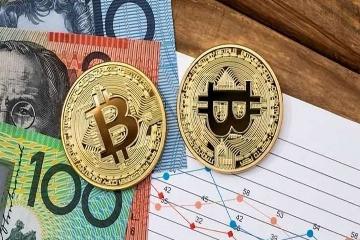What Lies Ahead for Cryptocurrency?
Advertisements
Over the past decade, the emergence of cryptocurrency has profoundly reshaped global financial marketsThe inception of Bitcoin catalyzed the dawn of decentralized finance (DeFi), consequently triggering widespread interest in digital currency across the globeInitially dubbed "digital gold," this sphere has evolved remarkably, with countless blockchain projects and digital currencies now saturating the marketAs nations gradually tighten regulations, especially amid the rise of government-backed digital currencies such as the digital dollar, questions persist regarding the future trajectory of cryptocurrenciesThe tension between decentralized finance and Central Bank Digital Currencies (CBDCs) may provide us with crucial insights into this unfolding narrative.
Decentralized finance, or DeFi, represents a novel financial paradigm fundamentally anchored in blockchain technology
Its primary goal is to eliminate intermediaries prevalent in traditional financial systems, such as banks and brokeragesThrough the utilization of smart contracts, DeFi platforms empower users to engage in borrowing, trading, and asset management activities independently, circumventing any centralized authorityThe essence of DeFi lies in decentralization, emphasizing complete user control over assets and offering a trading environment characterized by openness, transparency, and trustlessness.
The emergence of DeFi has not only challenged the limitations of traditional financial models but also provided innovative solutions for broadening global financial accessThe rapid advancement of blockchain platforms like Ethereum has facilitated diverse applications of DeFi, encompassing decentralized exchanges (DEXs), lending platforms, and stablecoinsOne of the most significant advantages of DeFi lies in its ability to deliver financial services to underbanked populations, particularly in regions with insufficient financial infrastructure, paving the way for a more inclusive global financial future.
Nonetheless, the DeFi sector grapples with a myriad of challenges
- Weak Recovery of Gold Prices
- Tech Stocks Propel Nasdaq to New Heights
- Insights on Investment from Market Environment Changes
- Silver Average Price Expected to Reach $33 Next Year
- Ongoing Premium! These Funds are Actively Warning of Risks
Technical risks, vulnerabilities in smart contracts, and issues pertaining to platform security remain prevalentFurthermore, the decentralized nature of DeFi transactions often makes them susceptible to market manipulation and price volatility, posing substantial regulatory hurdlesAlthough the decentralized ethos is appealing, for DeFi to transition into the mainstream, substantial challenges concerning security and compliance must be addressed effectively.
Contrasting the vigorous growth of DeFi is the digital dollar, a concept increasingly prioritized by governments worldwide, particularly in the United StatesThe digital dollar is a form of digital currency that is both issued and regulated by a central bank, essentially representing a digitized version of fiat currencyUnlike decentralized cryptocurrencies, the digital dollar is under government control, with its issuance and management subject to regulatory oversight
Primarily, the digital dollar aims to amplify the efficiency of payment systems, mitigate transaction costs, and enhance transparency within the financial ecosystem.
The introduction of the digital dollar indicates a gradual acceptance and assimilation of cryptocurrency within traditional financial systemsMany nations, particularly major economies, have begun exploring the potential of digital currenciesChina's digital yuan (e-CNY) serves as one prominent example, utilized not only for domestic transactions but also facilitating international tradeThe U.S. is actively propelling its digital dollar initiative; although it has not yet been fully implemented, the significant economic power and policy influence supporting the digital dollar suggest its inevitable arrival is merely a matter of time.
The digital dollar's notable advantages include its stability and trustworthiness
Being government-issued and regulated, it is insulated from market volatility, providing greater price stability compared to cryptocurrencies like BitcoinAdditionally, the digital dollar can leverage the advantages of blockchain technology to enhance the efficiency and transparency of payment systems while reducing intermediary costs associated with cross-border transactions.
However, the digital dollar introduces new sets of challengesPrimarily, it poses a potential threat to the decentralized finance ecosystemGoverned by central authority, the digital dollar might constrain the development of decentralized systems and possibly suppress the circulation of decentralized currencies through legal meansMoreover, the widespread adoption of the digital dollar could elicit concerns regarding individual privacy, particularly inquiring into monitoring practices and data collection

Many are apprehensive about the government possessing authority over private transaction data, fearing this encroaches upon their privacy rights.
In light of the dual trends of decentralized finance and the digital dollar, pondering how the future landscape of cryptocurrency will evolve is a thought-provoking questionOne potential scenario involves DeFi and the digital dollar coexisting in separate domains, each serving unique functions and promoting parallel development.
DeFi may continue to thrive in sectors unimpeded by traditional financial systems, particularly where there exists a strong demand for financial freedomThe capacity of DeFi to furnish low-cost, transparent financial services could render it a crucial solution for addressing financial exclusion, particularly in underserved areasHowever, the inherent decentralized characteristic of DeFi means it must continually contend with regulatory pressures and technological risks.
Conversely, CBDCs like the digital dollar may emerge as mainstream currencies within the global financial ecosystem, particularly in areas such as cross-border payments, transmission of monetary policy, and financial regulation
The stability and legitimacy of the digital dollar establish it as an indispensable facet of the global payment infrastructure.
It is also plausible that further technological advancements may cultivate a synthesis between decentralized finance and central bank digital currencies in select areasCertain blockchain initiatives may merge with the digital dollar, employing decentralized technology to enhance the efficiency and affordability of financial servicesIn this scenario, decentralized finance and CBDCs could transition from being viewed as opposing forces to complementary entities that collaboratively advance the development of the global financial system.
Ultimately, from decentralized finance to the rise of the digital dollar, the future of cryptocurrency is imbued with uncertainties and opportunitiesThe aspirations of DeFi juxtaposed against the realities of the digital dollar signify two distinct realms of finance
Leave A Comment